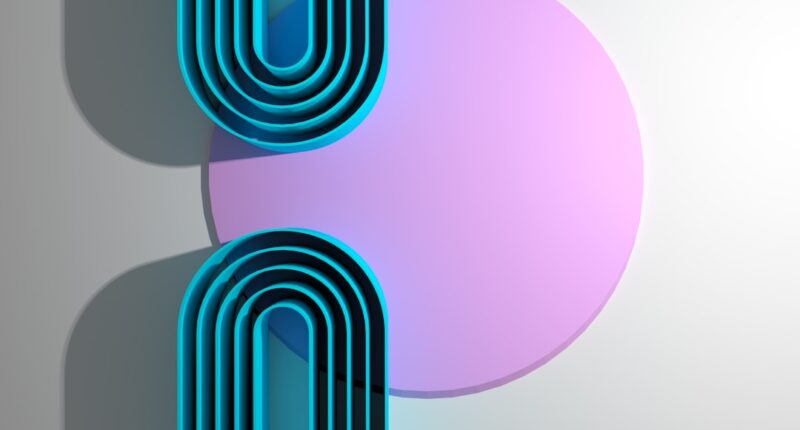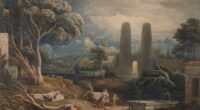The intersection of artificial intelligence (AI) and non-fungible tokens (NFTs) has emerged as a groundbreaking frontier in the art world, reshaping how art is created, owned, and traded. An AI NFT generator is a sophisticated tool that leverages machine learning algorithms to produce unique digital artworks, which can then be minted as NFTs on blockchain platforms. This technology not only democratizes the art creation process but also introduces a new layer of complexity to the ownership and provenance of digital art.
As artists and technologists collaborate, the potential for innovation in this space is vast, leading to a redefinition of artistic expression and value. The rise of AI NFT generators has sparked a wave of interest among artists, collectors, and investors alike. These tools enable creators to explore new styles and techniques that may not have been possible through traditional means.
By harnessing vast datasets of existing artworks, AI can analyze patterns, styles, and themes, generating original pieces that reflect a blend of influences. This capability challenges conventional notions of authorship and creativity, prompting discussions about the role of the artist in an age where machines can produce art autonomously.
Key Takeaways
- AI NFT generators use artificial intelligence to create unique and original digital art that can be tokenized and sold as non-fungible tokens (NFTs).
- AI is revolutionizing the art world by enabling artists to explore new creative possibilities and reach a wider audience through NFTs.
- NFTs are digital assets that represent ownership or proof of authenticity of a unique piece of art or collectible, and they have the potential to disrupt the traditional art market.
- AI plays a crucial role in NFT generation by automating the creation process, allowing for the production of a large volume of unique digital artworks.
- The benefits of AI NFT generation include increased accessibility for artists and collectors, but challenges such as copyright issues and environmental concerns also need to be addressed.
How AI is Changing the Art World
Collaborative Creativity
Artists are increasingly using AI as a collaborative partner, allowing algorithms to assist in the creative process. For instance, artists like Refik Anadol utilize AI to create immersive installations that respond to data inputs, blurring the lines between human creativity and machine-generated output.
Revolutionizing Curation and Discovery
AI is revolutionizing the way art is curated and discovered. Algorithms can analyze vast amounts of data from social media, galleries, and auction houses to identify emerging trends and predict which artists or styles will gain traction. This data-driven approach allows curators to make informed decisions about exhibitions and collections, ensuring that they remain relevant in an ever-evolving market.
Personalized Art Experiences
AI-powered platforms can personalize art recommendations for collectors based on their preferences, creating a more tailored experience that encourages exploration and investment in new artists. This not only enhances artistic expression but also invites audiences to engage with art in novel ways, fostering a deeper connection between the viewer and the artwork.
Understanding NFTs and Their Impact on the Art Market

Non-fungible tokens (NFTs) represent a significant shift in how digital assets are perceived and valued. Unlike cryptocurrencies such as Bitcoin or Ethereum, which are interchangeable, NFTs are unique digital tokens that signify ownership of a specific item or piece of content. In the art world, NFTs have gained prominence as a means of establishing provenance and authenticity for digital artworks.
By minting an artwork as an NFT on a blockchain, artists can provide verifiable proof of ownership and originality, addressing long-standing concerns about copyright infringement and digital reproduction. The impact of NFTs on the art market has been profound. Traditional art sales have often been limited by geographical constraints and physical gallery spaces; however, NFTs have opened up global marketplaces where artists can reach audiences far beyond their local communities.
Platforms like OpenSea and Rarible allow creators to showcase their work to a worldwide audience, facilitating direct sales without the need for intermediaries. This shift not only empowers artists financially but also democratizes access to art for collectors who may have previously been excluded from high-end galleries or auctions.
The Role of AI in NFT Generation
| Metrics | Data |
|---|---|
| Number of AI-generated NFTs | 10,000 |
| Percentage of NFTs with AI-generated art | 30% |
| AI algorithms used | GANs, StyleGAN, VQ-VAE |
| Marketplace sales of AI-generated NFTs | 1,000,000 |
AI plays a pivotal role in the generation of NFTs by enabling the creation of unique digital artworks that can be minted as tokens on blockchain networks. Through techniques such as generative adversarial networks (GANs), AI can produce images that mimic various artistic styles or create entirely new visual languages. For example, an AI model trained on thousands of paintings from different eras can generate original pieces that reflect the characteristics of those styles while introducing novel elements that challenge traditional aesthetics.
Furthermore, AI NFT generators can facilitate rapid experimentation in art creation. Artists can input parameters or themes into these generators, allowing them to explore countless variations of a concept in a fraction of the time it would take through manual methods. This capability not only enhances creativity but also encourages artists to push boundaries and explore uncharted territories in their work.
As a result, AI-generated NFTs are becoming increasingly recognized in the art world, with some pieces fetching significant sums at auction houses like Christie’s and Sotheby’s.
Benefits and Challenges of AI NFT Generation
The benefits of AI NFT generation are manifold, particularly in terms of accessibility and innovation. For emerging artists who may lack traditional training or resources, AI tools provide an entry point into the art world by enabling them to create compelling works without extensive technical skills.
However, challenges accompany these advancements. One significant concern is the potential for over-saturation in the market due to the ease with which digital artworks can be generated. As more creators adopt AI tools, distinguishing between high-quality works and those that lack depth or originality becomes increasingly difficult for collectors.
Additionally, there are ongoing debates about copyright issues surrounding AI-generated art. Questions arise regarding who holds ownership rights—the artist who inputted parameters into the generator or the developers behind the AI technology itself—creating legal complexities that have yet to be fully resolved.
Ethical Considerations in AI NFT Generation

The ethical implications of AI NFT generation are complex and multifaceted. One primary concern revolves around authorship and authenticity. When an artwork is created by an algorithm rather than a human hand, it raises questions about what it means to be an artist.
Is the individual who programmed the AI or provided input into its creation deserving of credit? This dilemma challenges traditional notions of creativity and ownership within the art community. Moreover, there are concerns about bias in AI algorithms.
If an AI model is trained on datasets that predominantly feature works from specific demographics or styles, it may inadvertently perpetuate those biases in its output. This could lead to a homogenization of artistic expression, stifling innovation and diversity within the art world. Addressing these ethical considerations requires ongoing dialogue among artists, technologists, and policymakers to ensure that AI serves as a tool for empowerment rather than exclusion.
The Future of Art and NFTs with AI Integration
As technology continues to evolve, the future of art and NFTs with AI integration appears promising yet uncertain. The potential for collaboration between human artists and AI systems will likely lead to new forms of artistic expression that challenge our understanding of creativity. We may see more interactive installations where viewers can influence the artwork through their actions or emotions, creating a dynamic relationship between audience and creator.
Additionally, as blockchain technology matures, we may witness further innovations in how NFTs are utilized within the art market. Smart contracts could enable artists to receive royalties automatically every time their work is resold, ensuring ongoing financial support for creators long after their initial sale.
The Potential of AI NFT Generation in Revolutionizing Art
The integration of AI into NFT generation holds transformative potential for the art world, offering new avenues for creativity while challenging established norms around authorship and ownership. As artists embrace these technologies, they are not only expanding their creative horizons but also redefining what it means to be an artist in the digital age. The ongoing dialogue surrounding ethical considerations and market dynamics will shape how this evolution unfolds, ensuring that both human creativity and technological innovation coexist harmoniously in the future landscape of art.
If you’re interested in learning more about AI NFT generators, you may want to check out this article on

